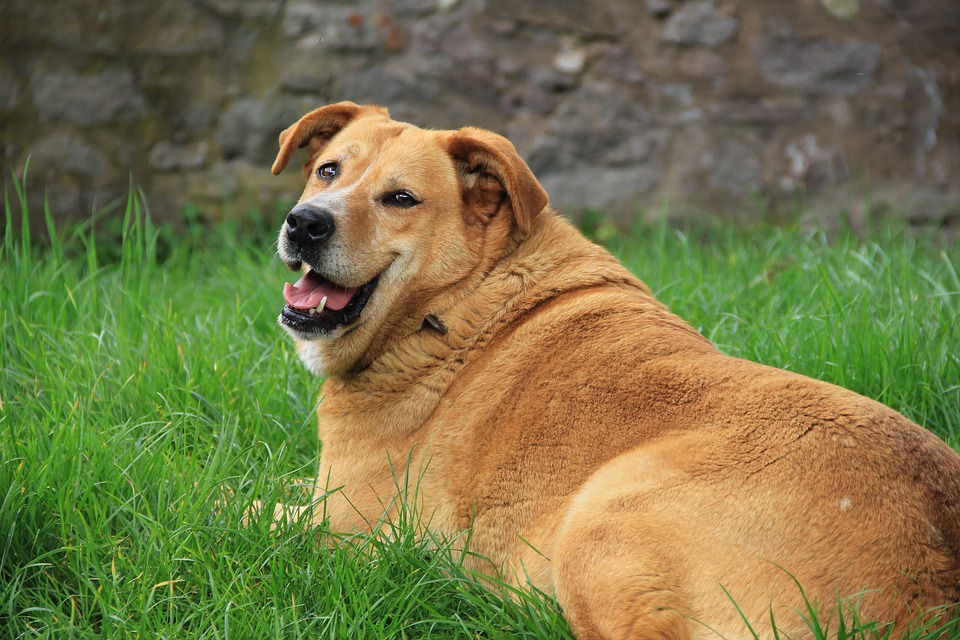Is Your Dog Fat?
How to Keep Your Dog Fit & Healthy
It’s no secret that obesity is a serious problem in the United States. But humans aren’t the only ones carrying more weight than they should – our pets are too.
 Studies show that nearly 60% of cats and dogs are either overweight or obese. While you may find their chubby swagger cute, those extra pounds put their health and wellness at risk.
Studies show that nearly 60% of cats and dogs are either overweight or obese. While you may find their chubby swagger cute, those extra pounds put their health and wellness at risk.
Overweight pets face a wide range of health issues, such as:
- Diabetes and insulin resistance
- Metabolic irregularities
- Thyroid imbalances
- High blood pressure
- Mobility issues
- Skin and breathing problems
- Respiratory and kidney disease
- Liver and heart problems, including heart failure
- Chronic inflammation
- Certain types of cancer
- Orthopedic issues, including joint disease and canine arthritis
But, worst of all, it can even shorten their lifespan and impact their quality of life.
So, how do you know if it’s time to put your pooch on a diet? Just like humans, it doesn’t necessarily come down to a number on a scale. Instead, the first step is looking at their body condition score – and you don’t even need a scale to do it.
The Body Condition Score
Checking your dog’s body condition simply involves touching and looking at them. There are four areas you want to take into account:
- Ribs
- Spine
- Hip bones
- Waist
Dogs at their ideal weight should have ribs, a spine, and hip bones you can easily feel but not see. Their tummy should appear tucked with a clear, well-proportioned waistline.
If you can’t see or feel these areas, your dog could be overweight or obese – especially if they have a stomach that sags or other fat deposits on their limbs or face.
Other Signs Your Dog Needs a Diet
You can also assess your dog’s weight by seeing how they respond to everyday activities. Signs your dog could be overweight include:
- Constant panting
- Wheezing when they breathe
- Struggling to rise from a lying or sitting position
- Playing less than they used to, or not at all
- Needing help with stairs or getting onto the bed, sofa, or into the car
- Waddling when they walk or run
- Snoring
Dogs who need to lose weight can also seem winded after minimal activity.
Steps to Help Your Dog Reach and Maintain a Healthy Weight
Several factors can lead to weight gain in pets. And, believe it or not, it’s not necessarily as simple as “calories in versus calories out.” However, that’s the best place to start.
First, talk to your vet to learn how many calories your dog should be eating daily for their ideal weight. Then, look at their current diet and keep track of how many calories they’re getting on a daily basis – that means dog food, treats, and any yummy table scraps. If your dog is getting more daily calories than they need, cutting back could be all it takes to lose those extra pounds.
Other strategies for successful weight management include:
- Choosing a balanced and nutritious food appropriate for their life stage
- Feeding smaller meals more frequently
- Treating your dog with healthy veggies, like carrots, broccoli, and cauliflower, instead of processed items
- Getting more cardiovascular exercise through brisk walks, fetch, or flirt poles
If your dog continues to gain weight despite a low-calorie diet, talk to your vet about next steps. Some dogs thrive on specific formulas, like higher protein/lower fat options. It’s also possible for too much calorie restriction to lead to weight gain and depleted nutrition. If this could be you, it could be time to consider a different kibble. Dogs can also have underlying conditions that contribute to weight gain, like an underactive thyroid gland.
Helping your dog reach their ideal weight isn’t always easy, but it’s worth it. Don’t forget to work closely with a vet you trust to make sure you do it safely.

